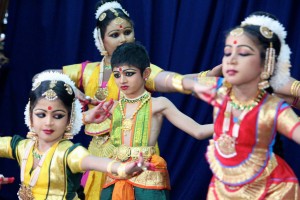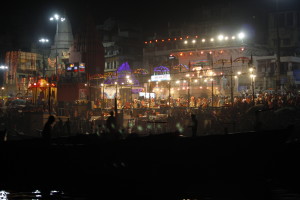“It’s more than a religion; it’s a way of life.” This answer is an automated response any time anyone poses the question, “What is Hinduism?” It has been so used and overused that it has almost become cliché. So what does it mean, really? It means that every aspect of our life, from brushing our teeth in the morning to falling asleep at night, is penetrated by Hinduism. Hinduism has a lofty enlightenment philosophy, available to all, but only attainable by those who sincerely seek for it. However, that constitutes the bare bones of Hinduism. The meat is in celebration, festivity, traditional clothing, food, and lifestyle. This is what adds color to Hinduism, and what people use to seek emotional fulfillment.
With the introduction of chain supermarkets, people in India lost the pure Vedic food that is described in the Bagashastra. We began to eat genetically modified food for the sake of convenience and organic food became harder to find and now is more expensive than “food” pumped with chemicals. With the introduction of Bollywood, we lost traditional dance and art forms because they were no longer fashionable. Now, when people think “India,” they think “Bollywood.”And finally, with the Western infiltration into our minds that gave us an inferiority complex, we lost our traditional attire and our languages, even in the depths of India. Essentially, we lost our way of life.

Bharatnayam at the Guruvayur Temple in Kerala, India
With these drastic changes, not much is left standing but the bare skeleton of Hindu philosophy: its science of enlightenment. When Veda Mata was stripped, there was one thing no one could erase: our ideas. But this is no longer sufficient to satisfy the needs of the masses, who seek for relevant emotional and lifestyle guidance. R. Jagannathan wrote an article about the importance of developing a “Hinduism Lite,” linked at the bottom of this post. He talks about two different versions of Hinduism – one that emphasizes the core philosophies and ideas of Hinduism for the Western mind and one that emphasizes a “lighter” social aspect. In my opinion, “Hinduism Lite” doesn’t have to be a lighter version of Hinduism. It just means that we also have to emphasize the color and vibrancy that comes with Hinduism, add meat to the bones, so to speak.
While Hindu monastic organizations are excelling at presenting Hinduism to western intellectuals, they are forgetting to address the needs of the masses. They are forgetting to deliver the meat of Hinduism that the masses so crave. While the science of enlightenment satisfies the intellectual thirst of the modern day, western seeker, it is not enough to quench the emotional thirst of the masses. They are forgetting to address the common man’s need for, well, life. Hinduism is, indeed, a lifestyle, but it is not being taught as such. Celebration of life, romance, friends, relationships, and various other dimensions of a person’s life are left in the dust.
Hinduism provides us with many ways to reach the ultimate. Intellectuals, and the modern mind, seek explanations, reasons, and they definitely don’t like being told what to do. Approaching Hinduism from an intellectual standpoint has its benefits. They learn the greater truths of life and then put them into practice from their own understanding in the hopes that eventually, their practice will set them free. However, the Hindu masses of India tend to approach Hinduism from the other side. The rituals of Hinduism regarding pooja and festivity give them emotional fulfillment; pure devotion and celebration will set them free.
By reviving the celebratory aspect of Hinduism, we make it relevant in every-day life. We don’t exclude the masses. This aspect teaches us to celebrate love and friendliness, but also to celebrate the loss of loved ones. It gives us the tools to deal with all parts of our lives.

Aarati on the banks of Ganga in Varanasi, India. Photo by: Adrian Bailey
There is a pervading thought throughout the public, that the science of enlightenment binds people to a narrow range of emotions. A variety of emotions can easily be a part of the life of a person that is on the road to seeking enlightenment. There is a misconception that people on the path to enlightenment are not allowed to express emotions in order to be well-balanced individuals. They need to maintain an even-keeled and friendly attitude towards everything, which can come off as being cavalier. However, it needs to be made clear that apathy is not the only emotion for a spiritual person; friendliness does not mean characterlessness. The problem arises when we try to separate our religious identity from our everyday identity. Wealth, health, love, loss, tragedy, and celebration, can all constitute our religious identity. The major Hindu organizations need to also develop this aspect of Hinduism as a science for the masses.
“Hinduism is more than a religion… It is a way of life.” It permeates all aspects of our life. This means that it not only defines our actions but also our emotions. In the past, the common man was easily able to live Hinduism, as that was his default lifestyle. Now, in the modern day, we need to focus our efforts to actively make Hinduism relevant to the masses. We need to revive the celebratory aspect of Hinduism and show that the science of enlightenment does not exclude the joys of every-day life.
The beauty of Hinduism lies in its color and scope. We need not create a new kind of Hinduism for the masses. We just need to add some meat to the Hinduism that has been stripped of its identity and revive the vibrant richness of Hinduism that makes it relevant in all aspects of our life.
—
Article by R. Jagannathan